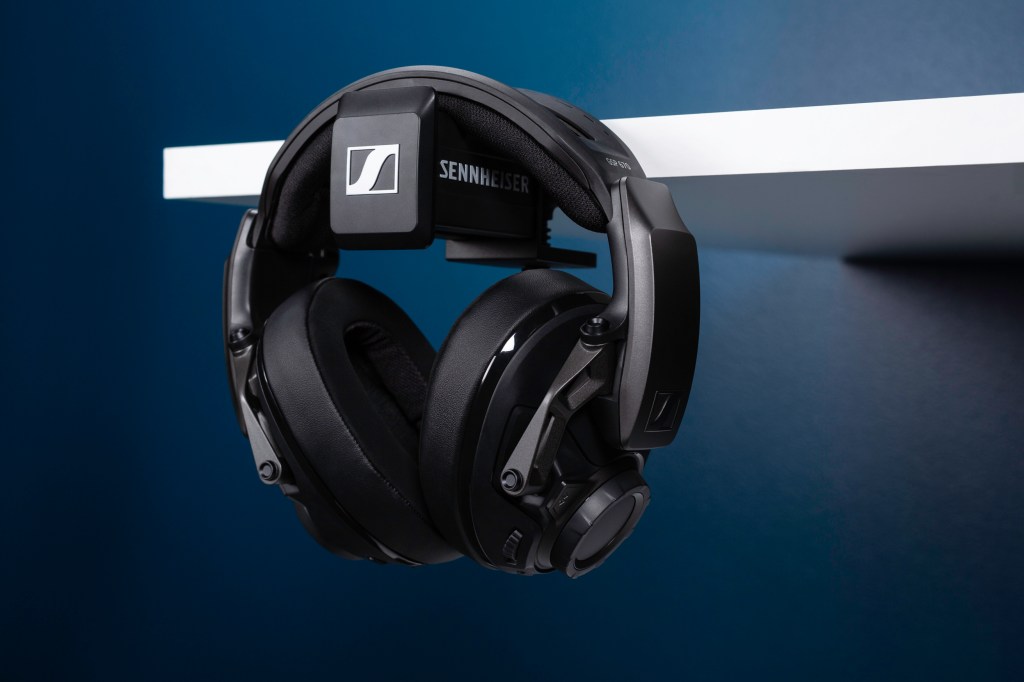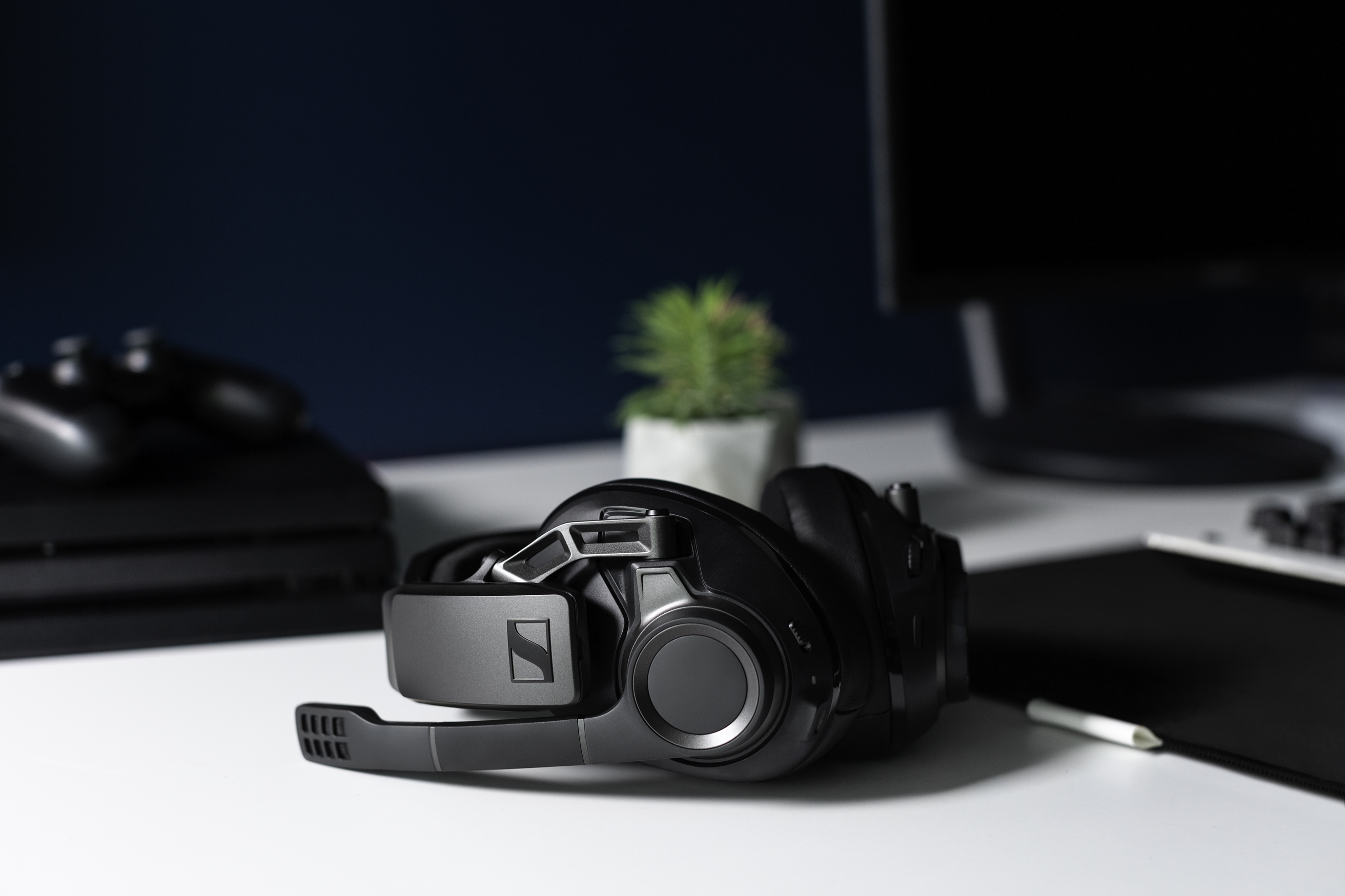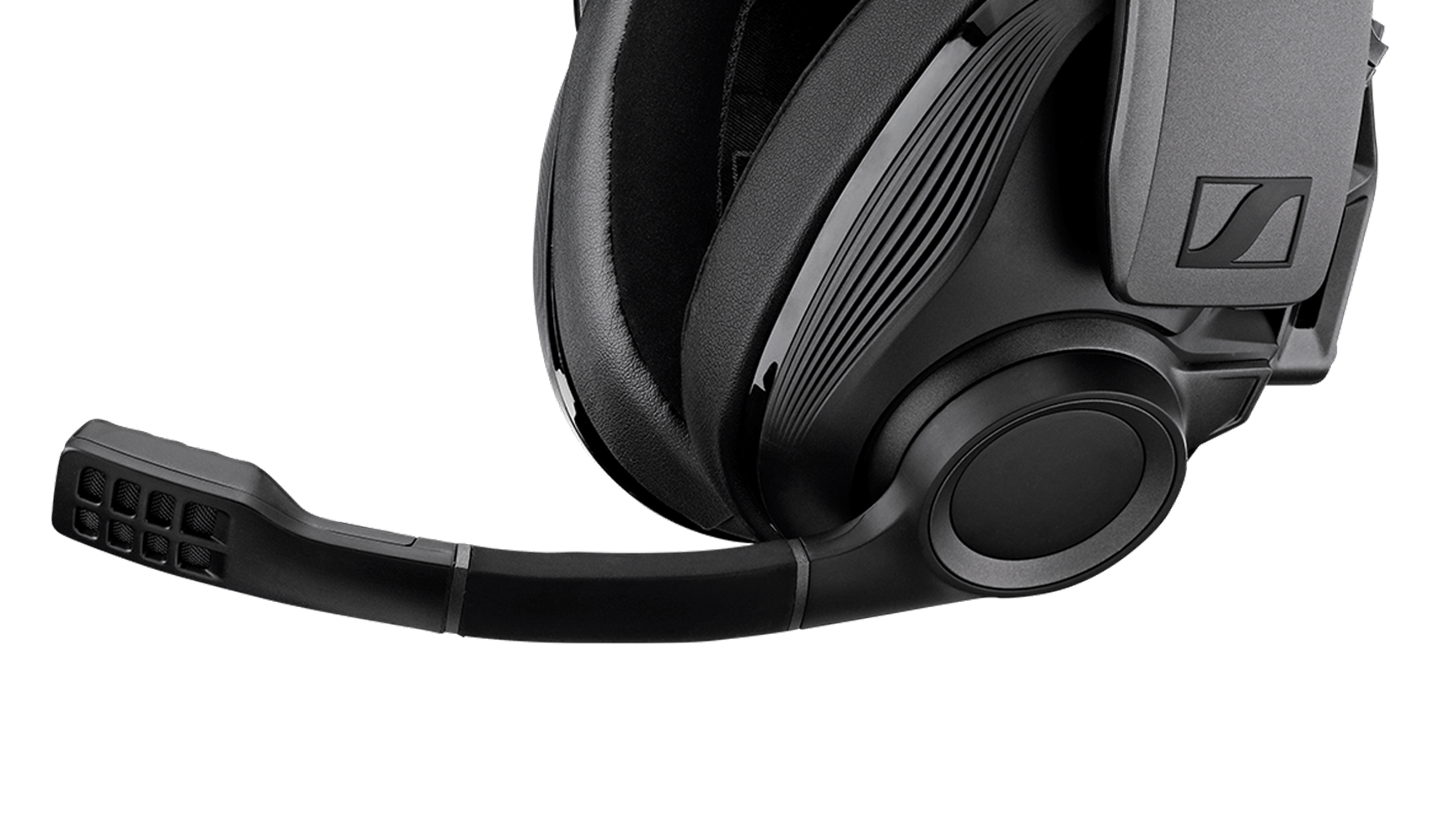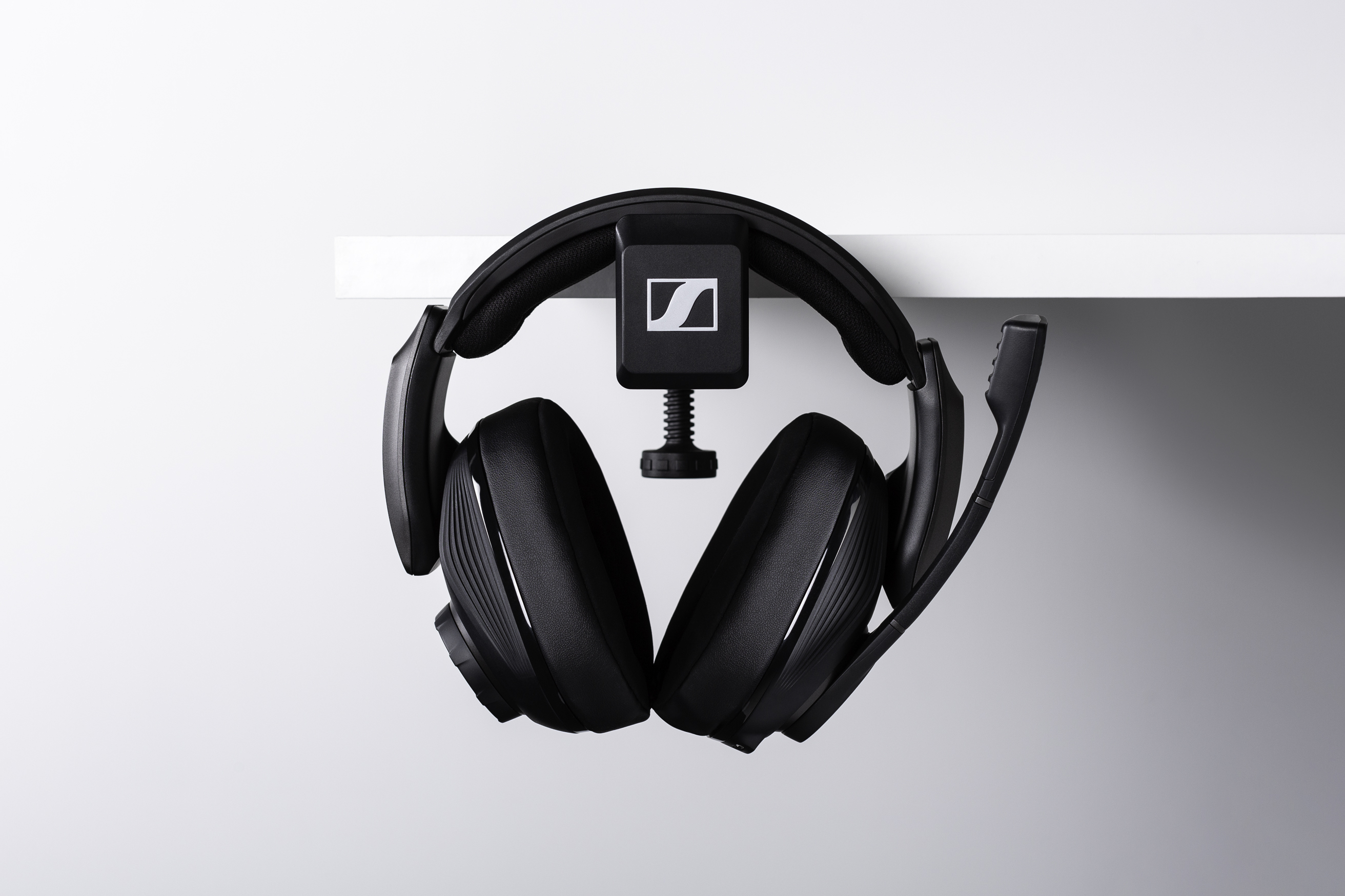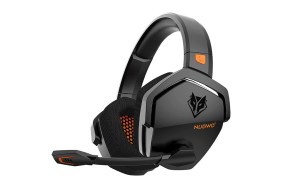Having worked in the music industry for more than a decade, I’m very familiar with the Sennheiser brand. Sennheiser is among the most popular microphones you’ll find in the industry. Its headphones have rested over the ears of many a DJ and producer, being a popular studio headphone brand. Sennheiser is a household name in audio gear. Last year, Sennheiser decided to bring its audio expertise to the gaming market, developing a line of headsets designed specifically for gamers. These headsets are now co-branded and sold in partnership with EPOS.
Sennheiser sent us both the GSP 670 and GSP 370 to review. I was originally planning on combining the two reviews into one and just note the differences, but these headsets are different enough (and at separate enough price points) that they really need to be reviewed independently. First, we’re tackling the GSP 670, Sennheiser’s premium flagship gaming headset that sits at $349.99, with our GSP 370 review to follow in a few days.
Sennheiser GSP 670 Wireless Headset PS4 Review – Pros
The GSp 670 isn’t the prettiest looking gaming headset that I’ve ever seen, but it gets the job done. It’s aesthetic certainly doesn’t evoke its premium price point, but the build is solid and largely comfortable overall. It actually features ear-shaped earcups (oval, larger on top, and smaller on bottom) and has tension sliders on the top of the band to adjust whether the pressure is put more on the top of the head or the sides. The black and brushed gray metal design is largely unremarkable, but I’d prefer headset manufacturers lean in this direction than make obnoxiously loud (visually) and stereotypical “gamer” headsets.
The wireless headset can be connected via either USB dongle or Bluetooth connection. It can also be connected directly using the USB cable and even charged while in use. (Update: I’ve learned that the headset only works wirelessly via the USB dongle or Bluetooth. While the headset can be charged while in use, you can’t actually use it in “wired” mode directly through the USB cable.) To use with your PS4, simply plug in the USB dongle and twist the volume knob to turn on the headset. There’s no satisfying “click” to confirm when the headset is on or off, but when the knob is turned all the way down, it turns the headset off. This is kind of a weird feature design, considering there is a switch on the other earcup (the same switch that the cheaper 370 uses as its power switch), but the 670’s switch is simply used to communicate the battery life. Flick it down and a voice will tell you the average percentage remaining.
Sennheiser boasts a 16-hour battery life for the GSP 670 (via the wireless dongle. Up to 20 when using Bluetooth), and that’s more or less what I found I was able to get with it. 16 hours isn’t especially high in the world of gaming headsets, but it will easily carry you through a few days of heavy gaming without needing a charge. The best feature regarding battery life is the quick charge, which allows you to charge it for just seven minutes to get an added two hours of life. This is especially useful if you forgot to throw it on the charger overnight or it dies unexpectedly in the middle of playing with your friends. A quick break and you’re back to playing for another couple of hours.
Relatively basic in general design, Sennheiser’s real specialty lies in audio. The GSP 670 sounds great. Its base EQ curve runs flat, meaning you’re getting the audio exactly as it was meant to be heard without the headset adding additional curves or colorations. There’s an audio clarity across all frequencies, from the rumbling lows to the crystal clear highs, and everything in between. When I test headsets, I use them to listen to a broad range of audio sources—games, music, film, and chat audio—and the GSP 670 performed admirably in all scenarios. Sennheiser claims “audiophile sound,” but the vast majority of people won’t notice the subtleties that make up audiophile quality and will probably just agree they sound “really good.”
On the other end, the microphone also holds up as a “broadcast quality” mic. It’s one of the clearest sounding mics I’ve ever used in a gaming headset, with excellent noise canceling that eliminates surrounding bumps, bangs, whirs, and voices. It features the functionality of muting by flipping the boom up (which should just be standard in all gaming headsets, honestly). The GSP 670 also has sidetone, which means you can hear your own voice—without a delay—through the headset. Access to customizing this feature is limited to the PC gaming suite, however (something I’ll touch on a little bit more below). Fortunately it “works” as is with the PS4 and I didn’t inherently need to adjust it, but having that feature locked to use with a PC decreases the value for console users.
Sennheiser GSP 670 Wireless Headset PS4 Review – Cons
For everything it’s got going for it, the GSP 670 is also missing a ton of quality of life features I’d expect—and even demand—from a headset in this price range. In my time reviewing headsets, I’ve come to realize that very few come perfectly packaged with every feature you might want. There are almost always caveats to be made in order to be affordable. But the higher price points compromise less and Sennheiser is entering a market of gaming headsets where companies have already passed the “audio quality” and “comfort” features, and have begun solving other needs and problems that gamers have with headsets. For a headset that retails at $350, it feels like it’s missing five years of design advancements that companies like LucidSound, Astro, and Turtle Beach have put a lot of time into figuring out, and it’s significantly more expensive too.
Particularly when partnered with the PS4, the GSP 670 loses a lot of features that it relies on its PC drivers for. The entire Sennheiser gaming audio suite is PC based and doesn’t actually save to the headset, so any alterations you make to your audio profiles don’t carry over to your PS4 audio experience. While it boasts 7.1 surround capabilities, don’t count on that with your PS4 games. It might try to simulate 7.1, but the PS4 isn’t even capable of sending surround audio signals via USB (which is why so many console headsets have a complex dongle that connects via USB as well as optical cable, which separates the chat and game audio streams and enables a higher quality of game audio). The GSP 670 is just a USB dongle with no optical connection at all. It also doesn’t have any kind of auxiliary wired option (USB aside).
While the GSP 670 is far from a bad headset, the value just isn’t there. There are premium headsets sold for $100 less that feel far more full-featured than the GSP 670. The audio quality is superb, that much is undeniable. It ranks among the best headsets I’ve ever used in terms of sheer sound. Sennheiser knows headphones and microphones after all. But they don’t know gamers. So instead of solving real problems and addressing real needs that a high-end gaming headset should, the GSP 670 headset simply checks off a few feature boxes while leaving others blank. If you intend to use it with a PS4, it lowers the value even more. Many of the features rely on a PC connection, and it’s a fairly limited and basic headset when used with the console. Sure, it sounds great, but it simply doesn’t warrant the exceptionally high premium asking price when other headsets do more for less and sound arguably just as good to the average listener.
Sennheiser GSP 670 Wireless Headset review unit provided by manufacturer for this review. For more information, please read our Review Policy.
Get the Sennheiser GSP 670 Wireless Headset on Amazon.
This page contains affiliate links to products. Purchases made using these links help support PlayStation LifeStyle.
